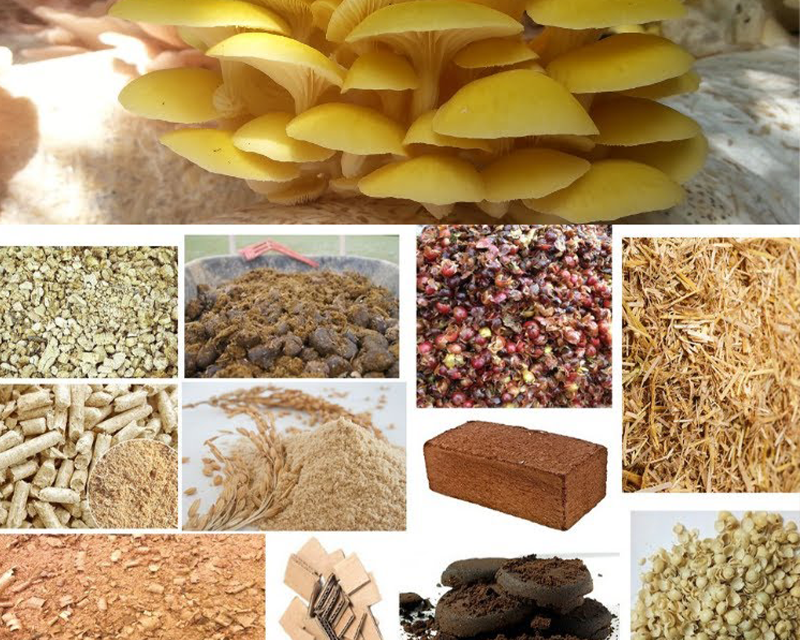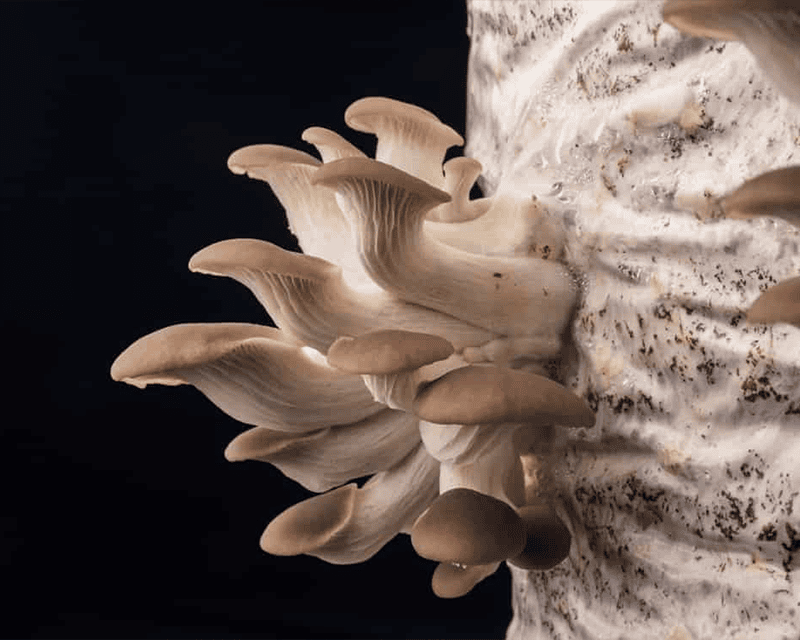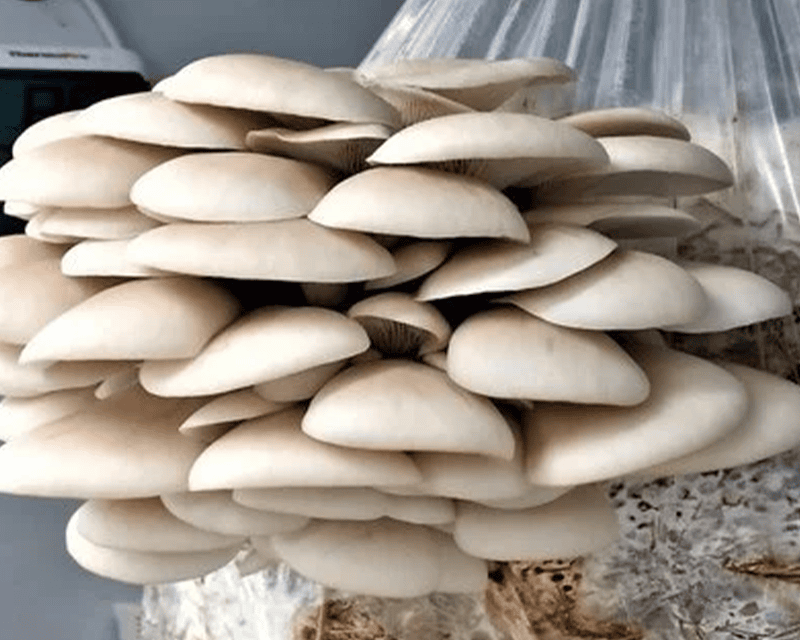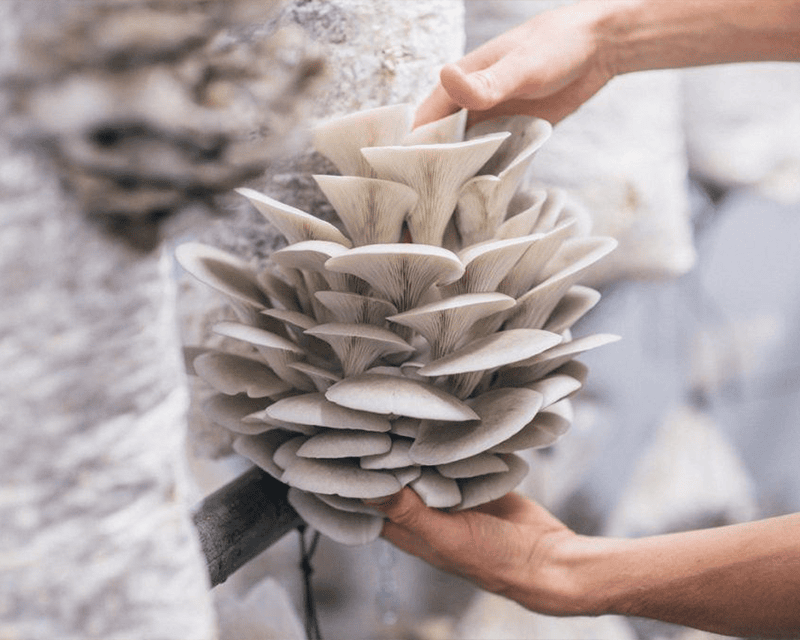Choosing the Right Growing Medium for Oyster Mushrooms:
- Oyster mushrooms are a popular choice for home cultivation due to their versatility and delicious flavor.
- When selecting the right growing medium for oyster mushrooms, it is essential to consider the specific needs of this type of fungi.
- The primary growing medium for oyster mushrooms is pasteurized straw, which provides the necessary nutrients for their growth.
- Additionally, other materials like coffee grounds, sawdust, or agricultural waste can also serve as suitable alternatives for cultivating oyster mushrooms. It is crucial to ensure that the chosen growing medium is free from contaminants and has the proper moisture content to support the development of healthy oyster mushrooms.
- The pH level of the growing medium is another crucial factor to consider when choosing the right substrate for oyster mushrooms.
- Oyster mushrooms thrive in a slightly acidic to neutral environment, typically with a pH range between 6 to 7.
- It is essential to monitor and adjust the pH of the growing medium if necessary to create an optimal growing environment for the mushrooms.
- By selecting a suitable growing medium with the right balance of nutrients, moisture, and pH levels, you can set the stage for a successful oyster mushroom cultivation process.

Selecting the Ideal Location for Growing Oyster Mushrooms:
When choosing the ideal location for growing oyster mushrooms, it is important to consider factors such as light exposure, temperature consistency, and air quality. Oyster mushrooms thrive in indirect natural light, so selecting a location that receives some sunlight but is not directly exposed to harsh rays is crucial. Additionally, maintaining a consistent temperature between 55-75°F (13-24°C) is optimal for oyster mushroom growth. Avoid placing the growing environment near drafty areas or heat sources as this can disrupt the temperature regulation required for successful cultivation.
Another vital aspect to consider when selecting the location for growing oyster mushrooms is air quality. Ensure that the chosen area has good air circulation to prevent the build-up of carbon dioxide, which can hinder mushroom development. Avoid placing the growing setup in a stagnant or confined space. Adequate ventilation will not only promote healthy growth but also help prevent the development of mold or other contaminants that can affect the mushrooms. Ultimately, choosing a location that meets these criteria will create an ideal environment for successful oyster mushroom cultivation.
Preparing the Growing Environment for Oyster Mushrooms:
- When preparing the growing environment for oyster mushrooms, it is crucial to create a space that is clean and free of contaminants.
- Start by thoroughly cleaning the area where the mushrooms will be grown, ensuring that any potential sources of contamination are removed.
- This will help provide a healthy environment for the mushrooms to thrive and minimize the risk of disease or unwanted organisms affecting the crop.
- Next, make sure to set up a suitable shelving or growing system that provides adequate support and space for the mushroom growing containers.
- It is important to arrange the containers in a way that allows for proper air circulation and access to light.
- Additionally, consider implementing a system for easy monitoring and maintenance of the growing environment, such as installing a thermometer and hygrometer to keep track of temperature and humidity levels.
- Creating a well-prepared growing environment sets the foundation for successful oyster mushroom cultivation.
Obtaining Oyster Mushroom Spawn:
When it comes to obtaining oyster mushroom spawn, there are a few options available for cultivators. One common method is to purchase ready-to-use spawn from reputable suppliers. These suppliers offer a variety of spawn types, including grain spawn and sawdust spawn, which are suitable for different growing mediums and conditions. By purchasing spawn, growers can save time and effort in the initial stages of mushroom cultivation.
Another option for obtaining oyster mushroom spawn is to create your own. This process involves culturing mycelium from a desired mushroom strain onto a suitable substrate. Cultivators can choose to make their own spawn from mushroom tissue cultures or by expanding existing mushroom cultures onto new substrates. While this method requires more skill and patience, it allows growers to have more control over the quality and genetic variation of the spawn used in their mushroom cultivation project.
Inoculating the Growing Medium with Oyster Mushroom Spawn:
After obtaining the oyster mushroom spawn, the next step in the cultivation process is inoculating the chosen growing medium. This stage is crucial for establishing mycelium growth, which will eventually lead to the formation of mushrooms. The spawn can be evenly distributed throughout the medium by mixing it thoroughly or layering it depending on the specific method chosen.
Proper handling and care during the inoculation process are essential to ensure the success of the mushroom growth. Ensuring a clean and sterile environment is imperative to prevent contamination from other competing organisms. Careful attention should be paid to maintain the correct levels of moisture and temperature to provide an optimal environment for the spawn to colonize the growing medium effectively.
Maintaining Proper Humidity Levels for Oyster Mushrooms:
Maintaining proper humidity levels for oyster mushrooms is crucial for their successful growth. These mushrooms require a relative humidity level of around 90% to 95% during the initial stages of growth. To achieve this, misting the growing environment regularly with a spray bottle filled with water can help maintain the necessary moisture levels. Additionally, covering the growing area with a clear plastic sheet can create a humid environment ideal for oyster mushroom cultivation.
It is important to avoid over-saturating the growing medium with water as this can lead to mold growth and hinder the development of oyster mushrooms. Monitoring the humidity levels regularly with a hygrometer can assist in adjusting the misting frequency accordingly. By ensuring the humidity levels are optimal, you can provide the ideal conditions for the oyster mushrooms to thrive and produce a bountiful harvest.
Providing Adequate Air Circulation for Oyster Mushrooms:
For Oyster Mushrooms to thrive in their growing environment, adequate air circulation is crucial. Stagnant air can lead to the buildup of excess carbon dioxide, which can negatively impact the growth and development of the mushrooms. To ensure proper air circulation, consider placing a small fan in the growing area to gently move the air around. This will help prevent the formation of pockets of stagnant air and promote a healthier growing environment for the oyster mushrooms.
In addition to using a fan, you can also achieve adequate air circulation by ensuring that the growing containers or bags have proper ventilation. This can be achieved by creating small ventilation holes or using containers with built-in ventilation. By allowing fresh air to flow in and out of the growing area, you can help maintain optimal oxygen levels for the oyster mushrooms to thrive. Remember, good air circulation not only supports the growth of the mushrooms but also helps prevent the development of mold or other unwanted contaminants.
Monitoring and Controlling Temperature for Oyster Mushrooms:
Maintaining the optimal temperature is crucial for the successful growth of oyster mushrooms. Oyster mushrooms thrive in temperatures between 55-75 degrees Fahrenheit. It is essential to monitor the temperature consistently to ensure it remains within this range throughout the growing process. Fluctuations outside of the ideal temperature range can impede growth and yield of the mushrooms.
Controlling the temperature can be achieved through various methods such as adjusting heating or cooling systems, insulating the growing environment, or utilizing fans for air circulation. It is important to be proactive in managing temperature fluctuations to provide a stable and favorable growing environment for oyster mushrooms. Remember, consistency in temperature regulation is key to promoting healthy growth and maximizing the harvest of your oyster mushrooms.
Harvesting Oyster Mushrooms at the Right Time:
Once the oyster mushrooms have reached the appropriate size and are firm to the touch, they are ready for harvesting. It is crucial to pick the mushrooms before they become overly mature to ensure the best flavor and texture. To harvest the oyster mushrooms, simply grasp the base of the stem and twist it gently to detach it from the growing medium.
Timing is key when it comes to harvesting oyster mushrooms. Waiting too long can result in mushrooms with a tougher texture and less desirable taste. On the other hand, harvesting them too early may lead to smaller yields. By harvesting the oyster mushrooms at the right time, you can enjoy them at their peak freshness and quality.





